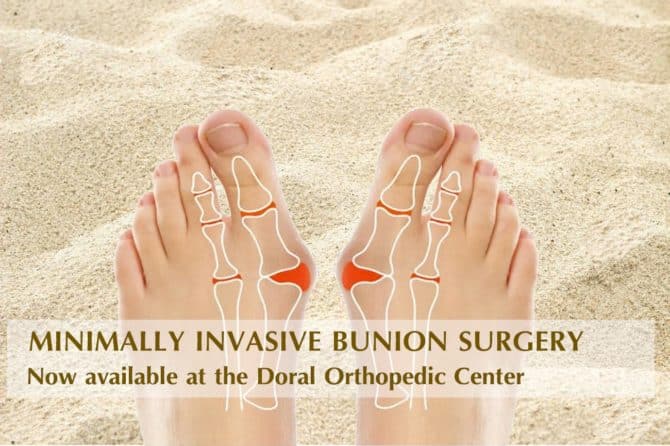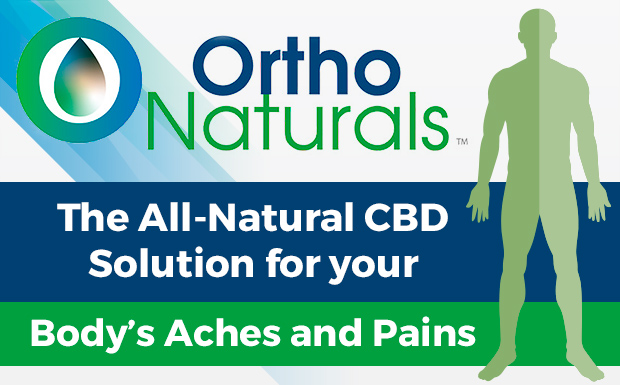
The development of a bunion, a bony hump at the inside base of the big toe, can be exceptionally uncomfortable and painful. One study estimates that up to 23% of people who are between the ages of 18 and 65 will have painful bunions. Known as Hallux Valgus, it is defined by a deformity that occurs at the first metatarsophalangeal joint, which is located at the big toe. It is more common with increasing age and is more prevalent in women.
When a bunion causes pain because of shoes or activities, and conventional treatments fail to alleviate symptoms effectively, the patient might consider undergoing a surgical procedure to remove the bunion. While the surgery is often performed in hospital settings, many people are turning to outpatient centers to have a new revolutionary minimally invasive bunion surgery. This treatment can allow for a speedier return to walking and activities than the traditional, open methods.
What to Expect during Bunion Removal Surgery
When a patient has a bunion, a range of conventional treatments can be attempted. Options include prescription or over-the-counter pain relievers, and/or anti-inflammatory medication. Some people find relief with a heating pad or ice bath. There are also pads and splints that help stretch the big toe or hold it straight. Others can pad the big toe, as long as you are able to wear different shoes that can accommodate them. The idea is to see if these treatments and methods could help to reduce the pain that the patient experiences. There are times, however, where noninvasive treatments do not help to reduce the pain. In such cases, bunion correction surgery might be appropriate.
An issue faced with open surgical methods, where a large incision is made – the type typically conducted in a hospital setting – is scarring and pain at the incision. Another issue is that the cost and cosmesis of these larger procedures can be significantly less attractive, making it less accessible to the patient that is not covered by a medical insurance plan. There is also the prolonged recuperation that is associated with the technique utilized in “open” surgery of this kind.
An alternative solution is for these patients to undergo a percutaneous procedure at an outpatient surgery center. This is an extremely minimally invasive procedure. There are typically three to four 1 cm long incisions – small enough to be closed with a single stitch. What was previously achieved with plates and a 7-9 cm incision, can now be accomplished via poke holes, essentially.
| While there is usually a period of non-weight bearing after any foot surgery, this period is significantly reduced with the new, minimally-invasive technique, due to fewer incisions and better metallic fixation implants. |
With this minimally invasive procedure, patients with a wide range of bunion deformities, from very mild to more severe, can begin walking almost immediately. Some patients are able to return to physical activities such as low – impact exercise at four weeks and minimal impact exercise at 8 weeks. This was uncommon with the traditional methods, which often meant staying off your foot for 6 to 8 weeks.
With the smaller incisions comes a decreased risk of infection and wound complications.
Patients need to realize how certain outpatient facilities can offer them access to minimally invasive surgeries, including the removal of a bunion, at a reduced cost. This procedure is common in Europe, but it’s not common in the US, as it is a new technology. However, the Surgery Center at Doral, Florida, is now offering this technique by Dr. Sophia Deben, by calling (305) 537-7272
It is not appropriate for every type of bunion, so consult your foot surgeon.
Conclusion
A bunion can develop into an exceptionally painful condition, even leading to disability in some cases. When standard treatments do not yield an effective reduction in pain symptoms, the patient may consider undergoing a surgical procedure to correct the bunion. The minimally invasive bunionectomy can be conducted at an outpatient surgery center. This new technology is exciting and is bringing rapid relief to many.



That’s good to know that minimal incision foot surgery only has a few small cuts that can be closed with a single stitch. My sister has always had horrendous bunions that have given her trouble for years. She had surgery on one foot, but it was too invasive and recovery was tough. I’ll have to make sure that she knows there’s a minimal version of the bunion removal available.
ReplyGreat Post!
ReplyThank you so much for sharing this blog with us. Your blog will provide useful information regarding failed Bunions. Bunions are usually caused by hereditary factors, as well as ill-fitted footwear. Tight and pointy shoes like high heels may promote the formation of a bunion. At our clinic Bunion Surgery Miami, This innovative procedure performed by Dr. Ray Lopez can correct your bunion with a simple and quick minimally invasive approach.
Thank You!
louis vuitton layouts
C.G INC supply 100% authentic Louis Vuitton outlet here offers cheap Louis Vuitton,authentic Louis Vuitton,Louis Vuitton handbags,Louis Vuitton bags,Louis Vuitton purses online with free shipping.Welcome to Louis Vuitton official website and enjoy shop…
Replyjordans white black red
New Style Cheap Jordans – Cheap 2018 New Style Cheap Jordans – Cheap Jordan Shoes Outlet Online Store : Air Jordan 31 – Air Jordan 1 Nike Air Footscape Flyknit adidas Dame 4 Nike LeBro,Cheap Jordan Shoes Air Jordan 1 Retro High in 2011_Jia.. Jordan Sho…
Replyshop air jordans
Both the toe cap and the heel have burst shapes, showing the Air Jordan 3 pedigree.
Reply